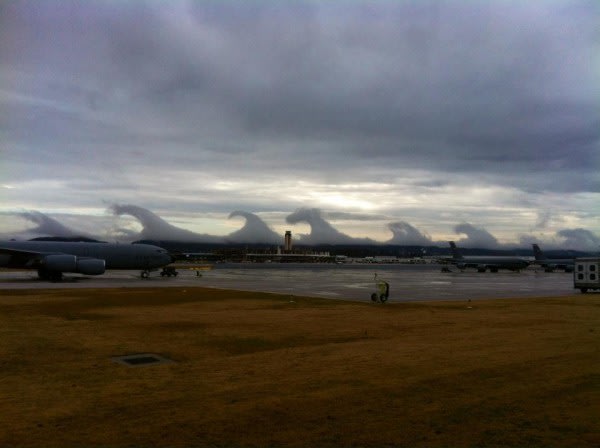I often get questions from people regarding how meteorologist define certain sky conditions. You often here the phrases Cloudy, Mostly Cloudy, Partly Cloudy, Partly Sunny, Mostly Sunny, Mostly Clear, and Clear in weather forecasts. But many don't know the distinction between some of these terms, especially between Partly Cloudy and Partly Sunny. These two terms seem to confuse people the most, but I will go through them all, just for your knowledge. So here we go!
Cloudy
This one is an easy one that most people can recognize. The sky is cloudy when it is completely covered in clouds, typically when an area of low pressure moves through the region. Many meteorologists define a cloudy sky as one where there is less than 10% of clear sky visible, while others state that it must be absolutely free of clear sky. I'm one of the type that say where there is less than 10% clear sky, it is cloudy!
Mostly Cloudy
This one too is easy to recognize but can be a bit tricky on one end of the spectrum. I typically define a mostly cloudy sky as one where there is between 10% and 30% clear sky visible. That's right, a mostly cloudy sky can have a few breaks here and there. But it can get a bit tricky with the more clearing you get, as it becomes partly sunny! (However, at night time there is no problem as night can not be partly sunny!)
Partly Sunny
This term is one of those that can easily confuse people since it's right between mostly and partly cloudy. It has more sun that a mostly cloudy sky, but more clouds than a partly cloudy sky. Generally, a sky with 25% to 40% of clear sky can be described as partly sunny (unless it's night).
Partly Cloudy
This one I like to divide into day and night portions since it actually has a wider range at night. During the day, a partly cloudy sky typically has about 40% to 75 % of clear sky visible. However, at night that range increases to 30% to 75%. Why? Well, a sky that is 30% to 40% clear during the day is considered Partly Sunny, but since there is no sun at night, it becomes Partly Cloudy!
Mostly Clear/Mostly Sunny
These are days that everyone seems to love. Plenty of sunshine with just a hint of a few clouds scattered here or there. They allow for quick warming during the day, but also quick cooling at night - the reverse of their mostly cloudy counterpart. A mostly clear sky can be defined as one with 75% to 95% clear sky.
Clear/Sunny
No clouds. No rain. No problems. Well... not exactly. Clear skies can be a delight, but they also accompany extreme heat waves and cold air outbreaks across the globe. They obviously let in a lot of sunlight during the day (plus during the winter, all that sunlight is reflected off of the snow!), but also release a lot of heat at night! A clear sky is one where there is less than 5% cloudiness in the sky (a.k.a. barely a wisp of a cloud).
I hope this clears things up a bit, but if it doesn't just let me know and I can try to go into further detail! Until next time, keep your eye on the sky!
